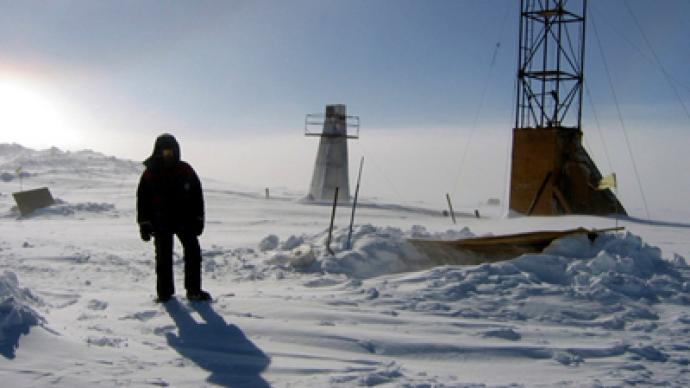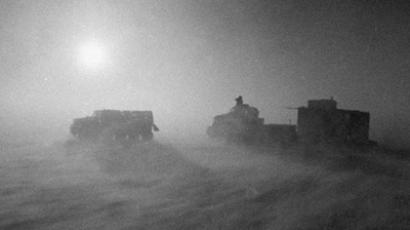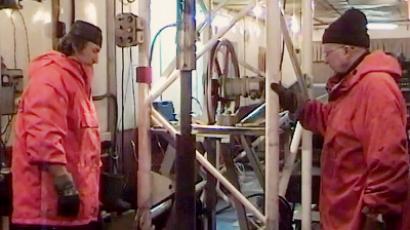Cool Find: Russian team takes ice from biggest Antarctic sub-glacial lake, searching for life

Nearly a year after Russian researchers reached the unique sub-glacial Lake Vostok, the first sample of transparent ice from its water has been taken. The finding is of great value as it could reveal if the lake harbors life.
The Lake Vostok, isolated by 4-kilometer layer of ice for around the past 20 million years, has been of great interest to scientists since it was first discovered in the 1990s. Locating it became one of the major finds in modern geography.
If it turns out that some primitive bacteria or even more complex life-forms survived in the lake’s waters it could offer an earth-shattering insight into our planet’s past.
Scientists managed to reach the fresh ice only on the depth of 3383 meters and took samples at 3,406 meters.
“The first core of transparent lake ice, 2 meters long, was obtained on January 10 at a depth of 3,406 meters. Inside it was a vertical channel filled with white bubble-rich ice,” the Arctic and Antarctic Research Institute said in its statement.
The ice formed as the water from the lake rose up into the whole due to under-pressure in the crack researchers drilled in last February.
“Initially, we saw completely unknown to us ice – an opaque, porous, bright white,” explained Vyacheslav Martianov, the deputy head of the Russian Antarctic Expedition. “But 20 meters after that we saw transparent ice, with the white ice frozen inside of it.”
This ice may have very specific physical properties that are different from ordinary ice and anything ever known before, Martianov said.
No one could predict what scientists would find in the ice hole.
All samples will be brought to Saint-Petersburg in May on board the research ship Academic Fyodorov, which is currently working in the Antarctic.
Now researchers plan to continue drilling to the depth of 3430 meters.
Last year Russian scientists managed to drill through 3700 meters of ice, reach the surface of the lake and take 40 liters of prehistoric water. However, those samples, as scientists said later, were not clean enough to prove the existences of any kind of life – the water contained some substances from the outside.
The following day, drilling liquid was found– some 1,500 liters of kerosene and Freon poured into special containers.
That’s why rival Western expeditions also racing to probe the depths of the sub-glacial lake have been using the hot-water drilling method – boiling the ice – which is slower but cleaner.
Russian scientists hope to use this find to answer whether or not traces of life can be found in the lake.
Vostok is just one of hundreds of subglacial lakes in the Antarctic. There are plans to drill into two others, Lake Ellsworth and Lake Whillans.
A British team attempted to drill into Ellsworth and collect samples of sediment from the bottom. However, British scientists failed and later halted the mission.
The British scientists abandoned the mission for at least three years, after trying for 20 hours to connect two holes in the ice that were needed for the hot-water drill to work.
The US team plans to start drilling in Lake Whillans in the beginning of 2013.
Lake Vostok was discovered by Russian specialists, supported by their British counterparts, back in 1996. Sonar and satellite images later proved the lake to be one of the world’s largest freshwater reservoirs. With its area reaching 15,000 square kilometers and a depth exceeding 1,200 meters, Lake Vostok is one of the biggest among 370 subglacial lakes in Antarctica.
However in 1998, drilling was halted just 130 meters from the lake’s surface after alarming concerns the ancient and unblemished waters risked being polluted if special precautions were not taken.
The relevant technology was developed only in 2003 in St. Petersburg. Work resumed in 2005 after further tests.
Drilling in the lake is far from an easy task, with average temperatures near the Vostok Station in the Antarctic reaching around –66 degrees Centigrade. This is close to the record breaking freeze recorded in 1983 when Earths lowest ever temperature was recorded at –89.2 C.














